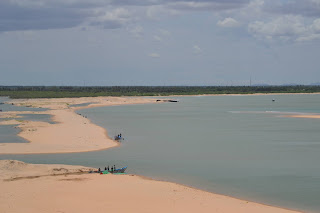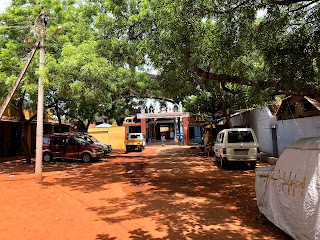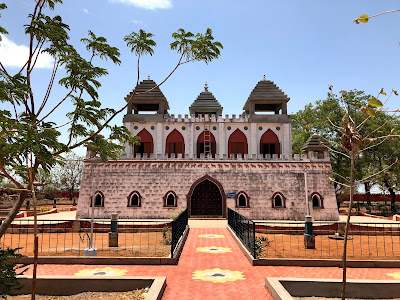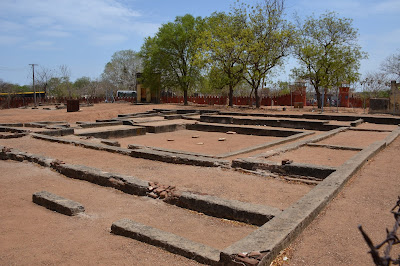தெனா அது உருகெழு குமரியின் தெற்கும்- புறநானூறு (South, to the south is the beautiful Kumari - Purananooru - circa 200 BCE)
Leaving Tuticorin, we drove south 2 hours to Kanyakumari, the very southernmost tip of India. Our original plan was to drive along the coast but our driver convinced us to take the new four-laned highway cutting across the interior. It was faster, safer and more comfortable. We stayed at the Sparsa in Kanyakumari. Old hotel but convenient and clean. Walking distance to all the major attractions including the Thiriveni Sangamam where the 3 seas the Eastern, Western and Southern meet. The ancient Tamils did not call them the Bay of Bengal, the Arabian Sea and the Indian Ocean you know. For such a touristy place Kanyakumari lacks quality accommodation.
A 20 minute walk to the east is the Thiriveni Sangamam, Sunrise Point and the ferry terminal to the Vivekananda Rock Memorial and the Thiruvalluvar Statue. An efficient and well run ferry runs every 10 -15 minutes. These are 20th century structures but are well worth the visit. The ancient Kumari Amman or Bhagavathy Amman Temple and the Our Lady of Ransom Church originally built in the 1500s are good attractions. The church has been rebuilt in its current form in 1900. The Kumari Amman Temple is an ancient shrine to the Goddess. Legend has it that the rubies set in her nose ring used to be visible to ships far out to sea. There are scores of other attractions. A 10 minute drive to the west is the Sunset Point.

















































